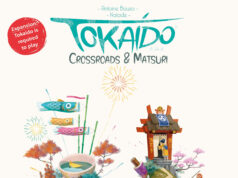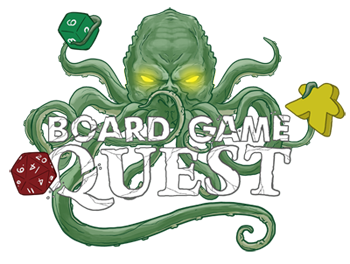 Travel back to the early 1900s, a revolutionary time for medical science, when vaccine development expanded, water treatment became more mainstream, and for the first time, scholars began to question the legitimacy of “hysteria” as a proper medical diagnosis for women.
Travel back to the early 1900s, a revolutionary time for medical science, when vaccine development expanded, water treatment became more mainstream, and for the first time, scholars began to question the legitimacy of “hysteria” as a proper medical diagnosis for women.
In Unconscious Mind, 1-4 players become historic contemporaries of Sigmund Freud, contributing to the burgeoning field of psychoanalysis over 60-120 minutes. In this heavyweight point-salad Eurogame, they will seek to advance their professional reputations by treating clients, attending meetings, and publishing manuscripts, all while fueled by copious amounts of coffee.
Gameplay Overview:
Unconscious Mind is a rules-intense meaty engine-builder whose multitude of mechanisms include worker placement, set collection, recipe fulfillment, and rondel movement. I will focus on just a few of the unique gameplay elements to give a sense of how it plays.
A turn consists of either taking a worker-placement action, retrieving your workers, or treating clients, the lattermost being the primary objective.
Treating and curing clients is accomplished in a manner akin to recipe fulfillment, where two separate dream cards dictating requirements are assigned to each client. Players earn in-game and end-game rewards for partially and fully curing clients.

Treating clients requires collecting the proper subset of nine possible “insights” (resources), but the full variety cannot simply be obtained from a market, like in other worker placement games. Rather, players acquire just three types of minor insights from the main boards, and then they must manipulate these insights up, down, and laterally about their personal nine-sectioned inter-connected ring-shaped dial. This manipulation of insights feels akin to transmutating metals in Trismegistus, i.e. an interesting puzzle.
The worker-placement board triggers the main actions of the game related to gaining and manipulating minor insights, acquiring notebook action tiles for your personal playerboard, publishing manuscripts, and visiting the city rondel. There are several unique features to spots on the worker-placement board:
(1) Spots can be triggered by up to two of a player’s tokens at a time, granting double activation.
(2) Spots are laid out in a 3×3 grid, each surrounded by 4 possible token placement spots (2 upper, 2 lower), thus granting multiple options for selecting and blocking various spots.
(3) The upper and lower options for each spot create a choice of row for token placement. Each row is linked to a distinct inkpot activation number 1-4 that will grant extra effects on your personal playboard.
Your personal playerboard contains a 3×3 grid of action slots that get progressively filled with notebook tiles. Each row of this grid aligns with an inkpot landing site. Your inkpot moves around a 5-stop circle, and depending on where it lands, you’ll trigger an entire row or column of notebook tiles. Thus, worker placement choices are intimately tied to inkpot movement and how your playerboard grid gets activated.
There is also a shared rondel city board players can visit, triggering various effects at a power corresponding to set-collection accomplishments.
The game timer is a reputation track that is advanced as players race to accomplish shared objectives.
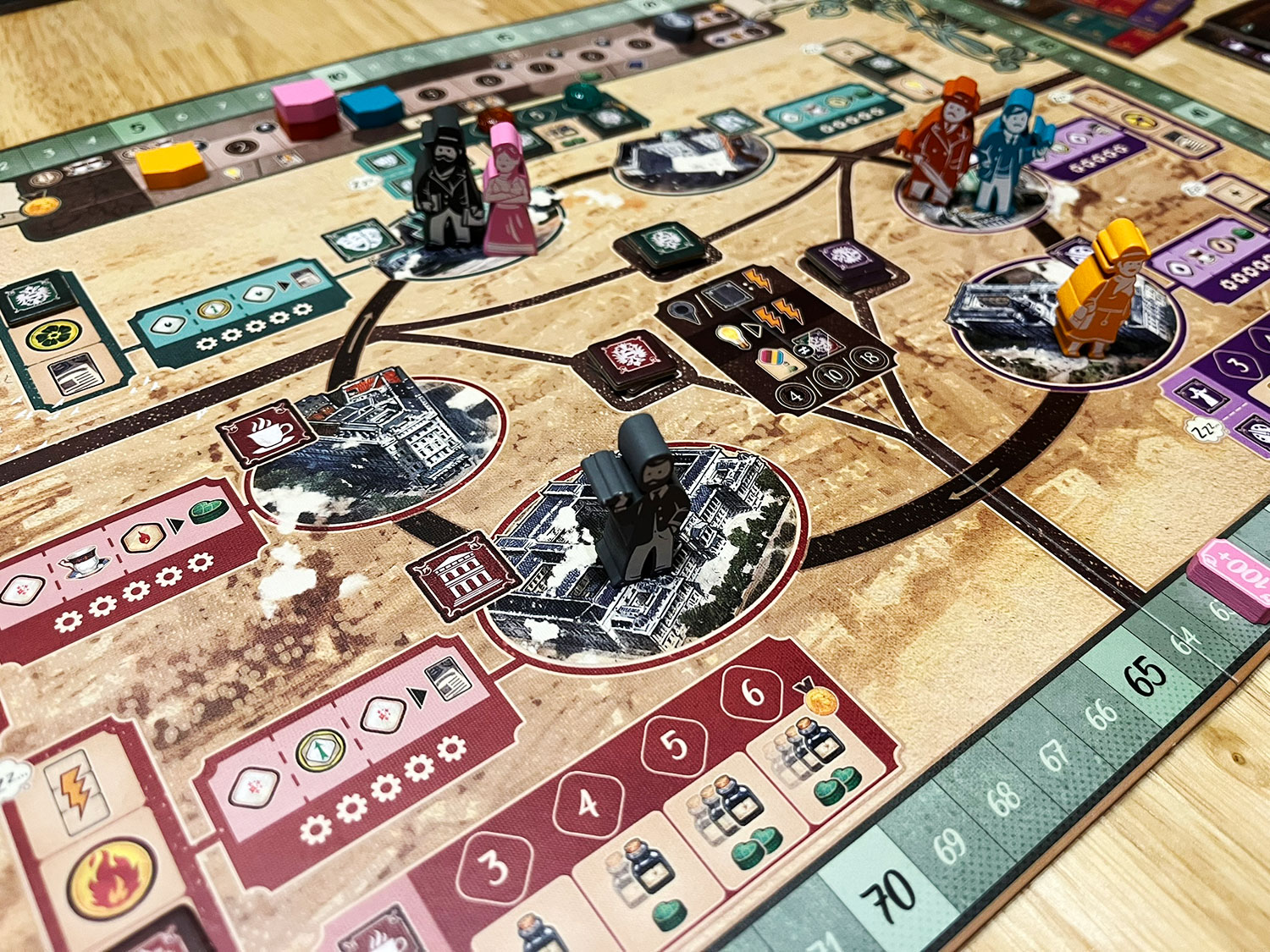
Game Experience:
Analysis paralysis-prone players beware! There are SO MANY repercussions to consider for any given turn of Unconscious Mind. Early game, the focus is on the worker placement board which contains nine possible actions accessible from up to 8-16 different token locations (depending on player-count). As your playerboard fills up with notebook tiles, you may have more efficient ways to accomplish your plans, and triggering the proper row or column with your inkpot might matter more than the action chosen on the worker-placement board.
Additionally, certain symbols will be accumulated from cured clients, publications, and cards throughout the game, and this makes the city rondel progressively more powerful. A double-activation of the city rondel late game could result in up to ten varying benefits across two different locations.
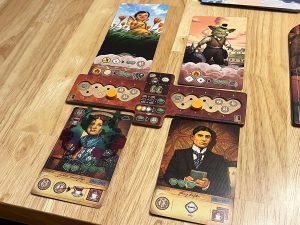
And then of course, there’s the question of how to use all these many actions and benefits to move insights around your nine-compartment dial as efficiently as possible so you can cure multiple clients.
Everything is inter-connected, and turns become more combo-tastic and creative as the game progresses, leading to longer and more involved turns. It’s a deliciously juicy puzzle, with multiple paths to accomplishing any given task, and with a thick stack of unique clients and notebook tiles, that puzzle will feel different with each play.
Equally as appetizing is the artwork and overall production. The double-layered boards, screen-printed wooden tokens, and chunky inkpot minis make the retail version feel deluxe. Andrew Bosley did the artwork for the dream cards in a whimsical, surrealist fashion. Vincent Dutrait rendered the art for the “real-life” elements of the game, including the worker-placement board and client cards, in a more austere and darker style. Client cards get overlayed by clear grief layer cards, obscuring the patient with a Rorschach-like design. Great attention to thematic detail was applied all-around.
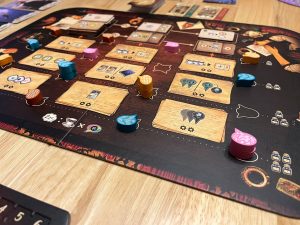
So do you feel like a leading-edge psychoanalyst as you play? Not really. The artistic flourishes are fantastic, but it’s still a heavy Eurogame, and players will likely be hyper-focused on optimizing their plan and racing for any of 13 competitive objectives relating to various gameplay elements that grant a reputation bump. Thus, the entire arc of the game feels tense as you compare your progress towards various objectives, and possibly make some sub-optimal moves to rush for the finish line before an opponent beats you to it.
And while I love the extra decision layer provided by the race for reputation, I also feel that this element overshadows other game elements. The leaders of the reputation track are awarded 2/1 points per cured client and published manuscript at game-end for first/second place; this will likely be at least 12+ points for first place. In most of my plays of Unconscious Mind across 2-4 players, final scores have been fairly tight, so the reputation track usually decided the winner, an outcome exacerbated by the fact of some objectives being substantially easier to achieve than others, which forces players to pursue these as opposed to attempting the more varied strategies offered by the game. I would have preferred a different approach to scoring the shared objectives.

Other chief complaints are that the game is long, and it’s a table hog. Analysis paralysis is going to happen with so many options, and player turns get longer as the game progresses, so the downtime can feel excessive at 4 players. You will also need ample table space at player counts 3+, and even then, when it’s time to select new clients and study the symbology of available dream cards, players commonly need to walk over to see better, which is just awkward.
Final Thoughts:
Unconscious Mind is a magnificent production with so much attention to psychoanalytical thematic detail that it employs two separate artists to conjure imagery for the dream-world vs real-world gaming aspects. Reputation-granting achievements may be over-emphasized, and players should be aware that the game requires both significant time and table space, but it’s worth it for gameplay that presents a mind-boggling number of choices. Worker placement spots are intimately connected to the action networks on the personal playerboards, allowing for progressively more complex turns as players build out their engines. The variety of content in the box and options on the board means Unconscious Mind will constantly challenge players to come up with fresh insights play after play.
Final Score: 4 stars – A mind-boggling number of combo-tastic options will baffle budding psychoanalysts in this gorgeously produced heavy Eurogame
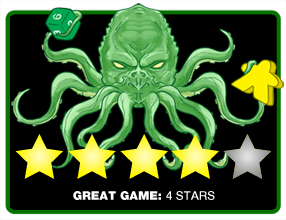 Hits:
Hits:
• Beautiful artwork and production
• Combo-tastic interplay between worker placement and personal playerboard
• Puzzly recipe fulfillment
Misses:
• Table hog
• Downtime at higher player counts
• Overemphasis on static reputation-boosting shared objectives








